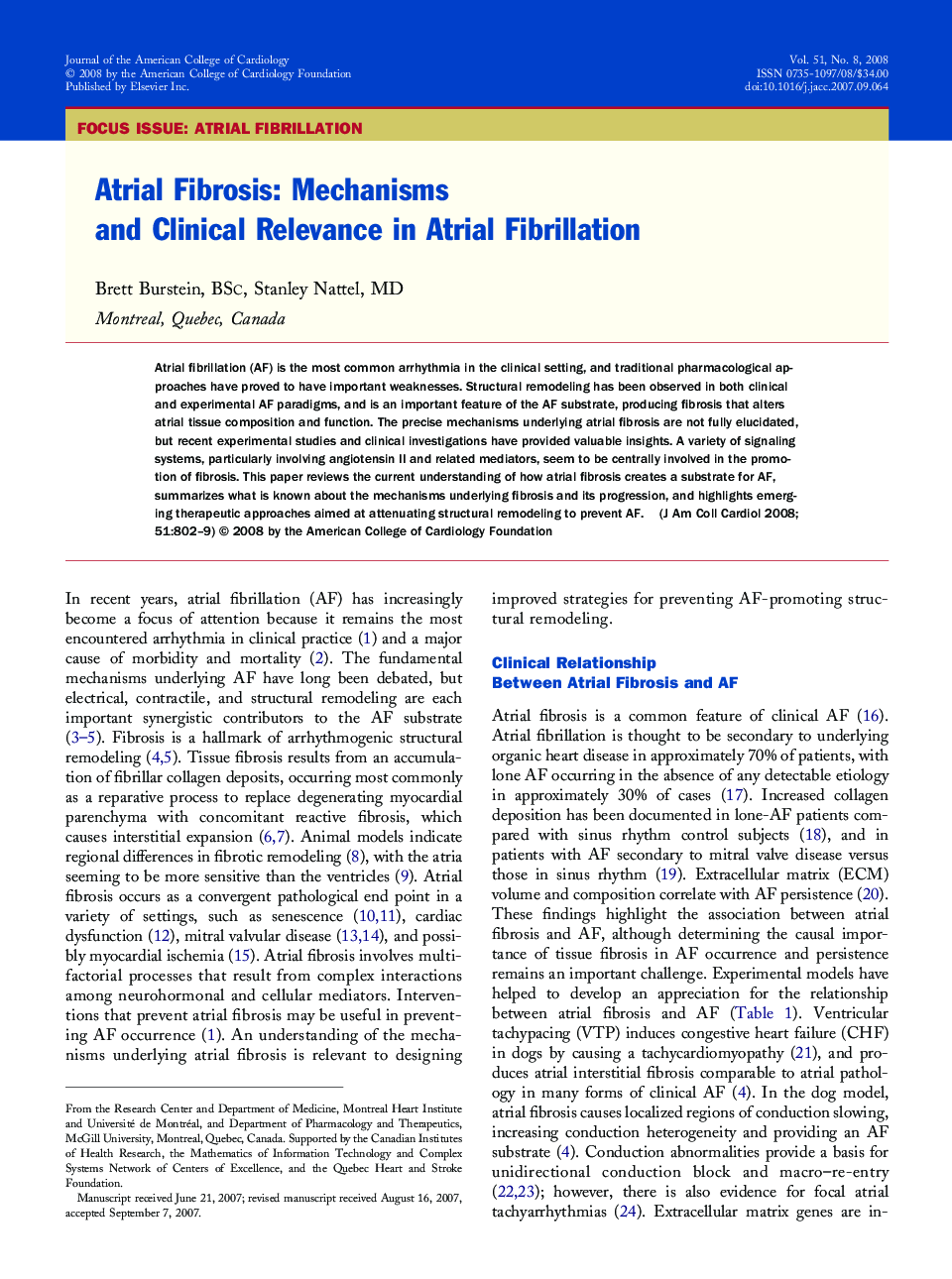| Article ID | Journal | Published Year | Pages | File Type |
|---|---|---|---|---|
| 2954040 | Journal of the American College of Cardiology | 2008 | 8 Pages |
Atrial fibrillation (AF) is the most common arrhythmia in the clinical setting, and traditional pharmacological approaches have proved to have important weaknesses. Structural remodeling has been observed in both clinical and experimental AF paradigms, and is an important feature of the AF substrate, producing fibrosis that alters atrial tissue composition and function. The precise mechanisms underlying atrial fibrosis are not fully elucidated, but recent experimental studies and clinical investigations have provided valuable insights. A variety of signaling systems, particularly involving angiotensin II and related mediators, seem to be centrally involved in the promotion of fibrosis. This paper reviews the current understanding of how atrial fibrosis creates a substrate for AF, summarizes what is known about the mechanisms underlying fibrosis and its progression, and highlights emerging therapeutic approaches aimed at attenuating structural remodeling to prevent AF.
